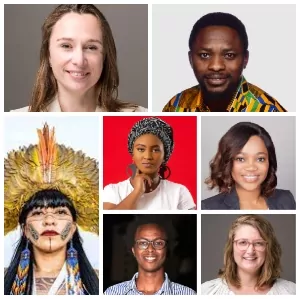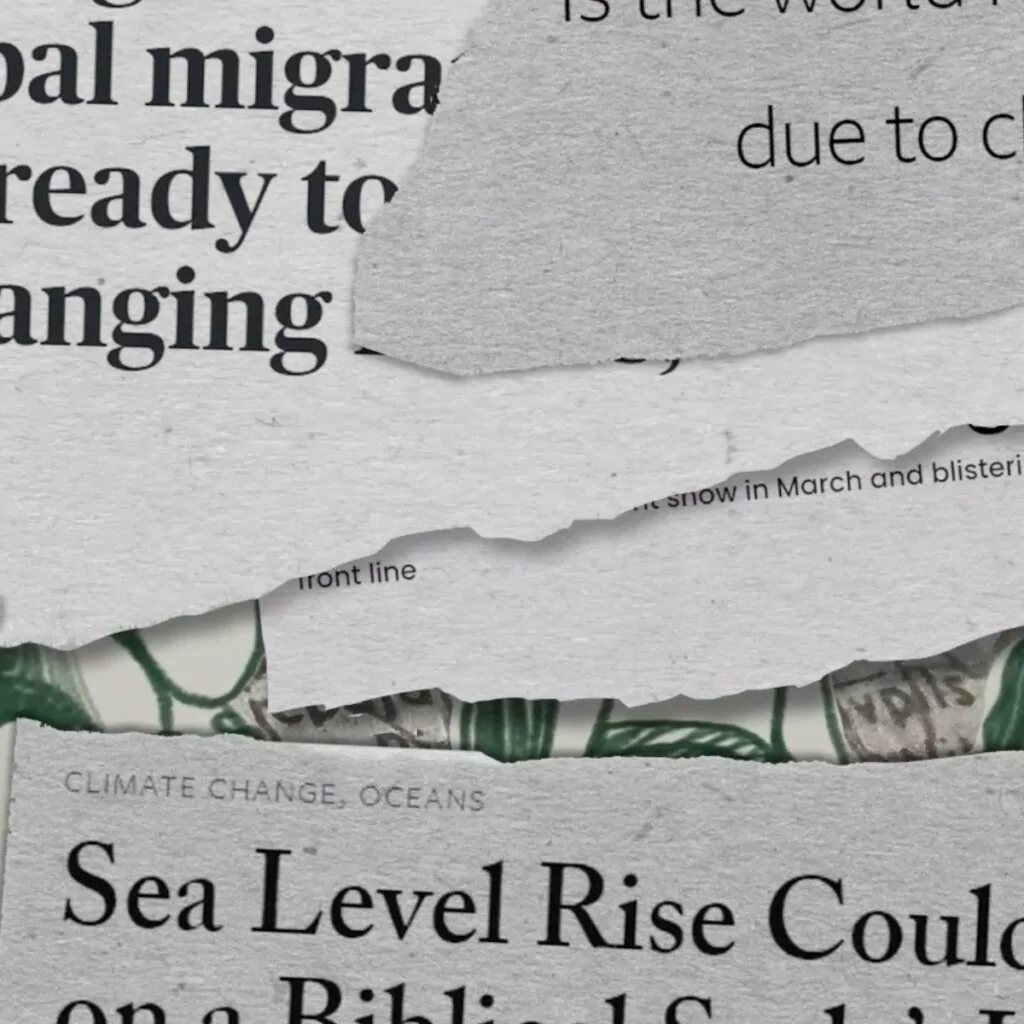Indigenous Peoples fight to protect our planet
Welcome back to this month’s edition of Livism. Each month we bring you stories of people living on the frontlines of the climate crisis.
Earlier this month, the International Day of the World’s Indigenous People was celebrated around the world. This annual event is a moment for us to acknowledge the critical role Indigenous communities play in tackling the global climate crisis. Existing research tells us that while indigenous communities represent 5% of the global population, they are stewards of 80% of global biodiversity and are defending vital ecosystems from extraction.
This month, we take you on a short journey around the world with two riveting stories from Indigenous communities and their fight to protect the planet. We speak with Alexis from Ecuador about the recent nationwide protests and Indigenous Peoples’ fight to defend their ancestral territory. We then take you all the way to Sweden to meet Brita-Stina, a reindeer herder who tells us about Sámi culture and its respectful relationship with nature.
We’ve also put together a list of our favourite new books, podcasts and webinars from the month, highlighting stories from regenerative farmers, activists and artists.
Happy reading!
From,
The Livism Team
Ecuador, a country with unanswered questions
By Alexis Grefa
I am a young Kichwa Indigenous man from the canton of Santa Clara in the Ecuadorian Amazon. In my lifetime, I have seen the cost of living gradually increase with each elected government that passes through. While opportunities to better one’s circumstances are few and far between, the prices of fuel and basic necessities climb, crime is normalised, and rural schools face an educational crisis. These are just a few of the issues that motivated Indigenous communities and grassroots organisations across the country to protest, requesting that our top leaders take forceful action to improve the quality of life for Indigenous People and to ensure that our land remains protected.
But to understand the situation in Ecuador, let’s go back to 1960 when oil was discovered in the Ecuadorian Amazon. At the same time, the region also became important for the extraction of gold and copper, which attracted the interest of several foreign companies whose work in the region caused significant environmental and social issues. We, Indigenous Peoples, have been fighting to protect our land ever since.
Of the 17 million inhabitants in Ecuador, at least 1.5 million are of Indigenous origin. Our mobilisation started growing in the 90s: we even managed to get the country to become a multinational and intercultural state that recognises the independent identities and nationalities of Indigenous Peoples who must have a voice and participation in the political process. Yet violations against Indigenous Peoples’ rights and land have continued. But, so too have our protests to protect our biodiversity and our land.
In the past few months, we protested against the lack of employment for Indigenous Peoples as well as the handing over of mining concessions in our territories without our consent. We are demanding control of the prices of agricultural products and fuel, and asking for a larger budget for education. At our core, we are protesting the fact that, despite the promises made by our elected officials, we continue to live in a country that values profit for a select few over equity and environmental protection for all.
The peaceful protest was led by the Confederation of Indigenous Nationalities in Ecuador (CONAIE) – a social organisation that represents 15 Indigenous communities. Since its creation 35 years ago, the CONAIE has promoted self-determination, self-government, collective rights, the conservation of nature, culture, identity, ancestral knowledge and Intercultural Bilingual Education.
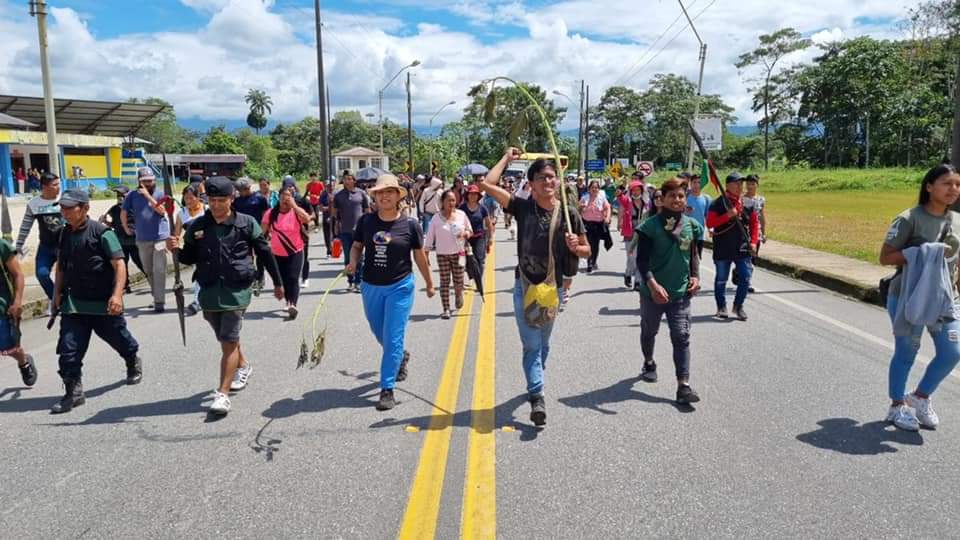

Alexis (centre, arm raised), along with other young people, marched around the town centre inviting others to come out to support the strike.
With the call from the CONAIE at the national level, all of the various grassroots communities voluntarily came together and blocked the main highway which runs through the Amazon, connecting the north of Ecuador to the south.
Young Indigenous people played a key role in these road closures. We participated in a great march, calling everyone to come out into the streets. After 18 days of protest, the Church had to intervene as a mediator so that various parties could reach an agreement. But I, like many Indigenous people, am frustrated by the results: leaders have not concretely agreed to make any tangible changes.
We currently find ourselves in a process of dialogue. Our Indigenous representatives tell us the government hasn’t made much progress on responding to our demands and that the talks are just a strategy to end the serious crisis and internal shock the country experienced due to the protests. Soon, the 90-day period to fulfil the agreements will be up and there is still no concrete plan of action for addressing our concerns and our needs. That is to say, once again hard days of national mobilisation are looming while the government continues to say the country is at peace and better than ever.
Spotlight on: Brita-Stina Sjaggo
Brita-Stina Sjaggo, 39, is a Sápmi reindeer herder and mother of two who is passionate about preserving old-growth forests, rivers with clean water and ecosystems that will function for millions of years to come. She served as the chairman of Sáminuorra (the Sámi national youth organisation in the Swedish part of Sápmi) between 2004 and 2006, and in 2021 was awarded the Forest Award from the The Swedish Society for Nature Conservation for her efforts to conserve mature forest, forest of reindeer pasture and the Sámi culture.
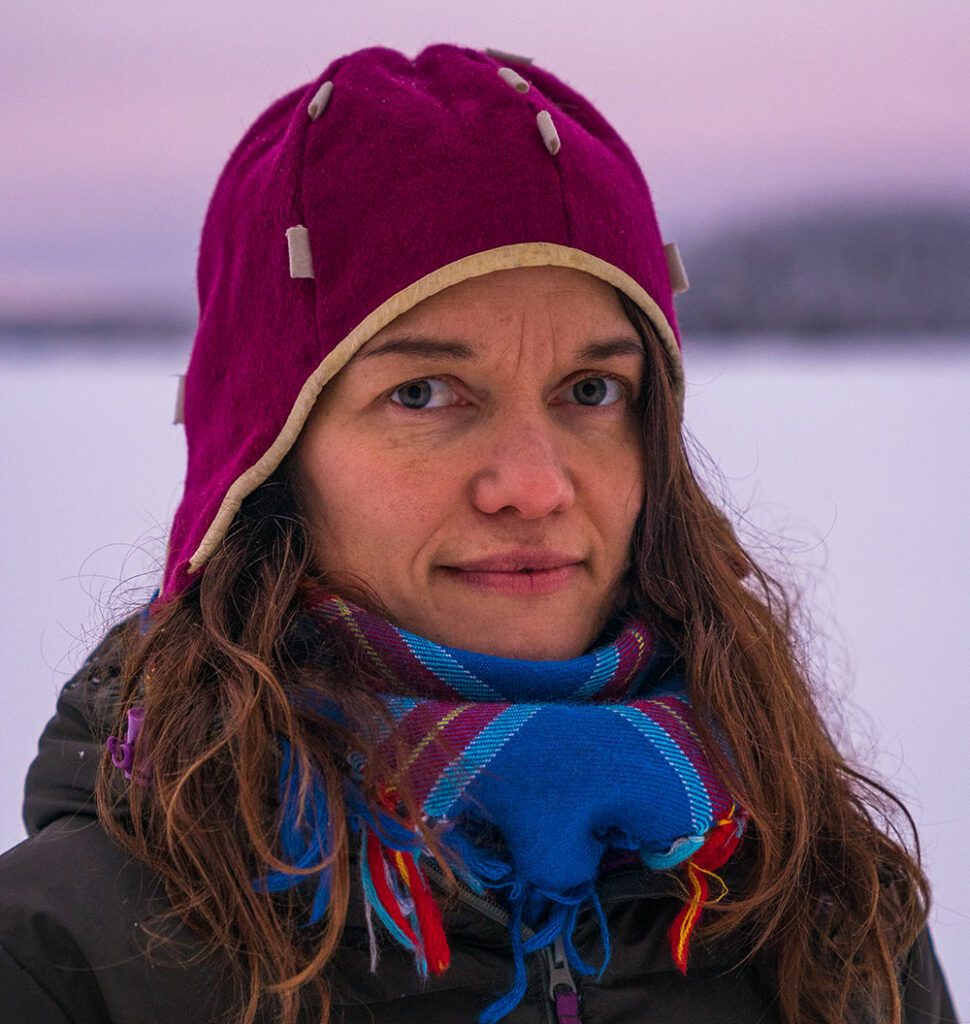

© Marcus Westberg
Can you explain how the Sámi People are on the frontlines of climate change?
For the Sámi People who make their living from reindeer herding, the climate crisis is an abyss that threatens the livelihood of the entire reindeer-herding population. Animals and plants in the North are adapted to cope with the dark and cold winter, but the seasons have shifted and suddenly it rains in winter and the snow that falls is wet and heavy. Reindeer are dying of starvation as the ground lichens, the food that reindeer forage for under the snow, become trapped by layers of ice on the ground. At the same time, the reindeer’s natural food source, tree lichens, has disappeared due to the logging of almost all old-growth forests by forestry companies. The food that could have saved the reindeer from starvation is therefore completely gone in many areas. The reindeer, which have been here since the last Ice Age, can no longer survive in their own home.
How has climate change affected your life personally?
I feel deeply anxious about the climate crisis. As a reindeer herder, my reindeer graze on the same land where my ancestors used to herd, and it is a great sadness to see the animals that I have undertaken to look after suffer because of lack of food. The alternative is buying factory-produced food and feeding the reindeer in a cooped up paddock. It is very costly and I cannot afford it. Besides, reindeer don’t do well being cooped up for long periods of time, they are destined to roam over wide areas and are a part of the ecosystem here in Sápmi.
I have two children and I know that they would like to continue a life with the reindeer when they grow up. But, as things stand, I am not sure it will be possible. I try to keep my hopes up, but every time autumn turns to winter I worry – will it be a good winter or will it end in disaster?
When it comes to tackling climate change, what is the most inspiring thing happening in the Sámi community that you could share with us?
The Sámi culture has a strong belief in not taking more from nature than it can bear without damaging ecosystems. The very strong values and unwritten rules around this are passed down through oral tradition. My elderly relatives have always been cautious and careful not to leave traces in nature. Even if a thousand reindeer have grazed one area over the winter, to the untrained eye there is not a trace of it visible in the summer after. We only fish as much as we need, to avoid the fish diminishing over time, and we cook outside over an open fire and shelter from the wind behind a hill instead of building things in the name of making nature more accessible for people. This is a stark contrast to Western capitalist society where we are told to constantly maximise profits and take as much as we can to increase so-called “growth”, even if it means ultimately sawing off the branch we are sitting on.
The Sámi People have a very rich artistic culture, how do you think it contributes to fighting the climate crisis?
Sámi artists contribute by telling people about Sámi values and how beautiful and generous nature can be if we take good care of it. Cultural expression can challenge greenwashing by big business and the unwillingness of politicians to make the decisions needed to slow down the effects of the climate crisis. A great Sámi artist, Sofia Jannok, addressed the so-called “green transition” that many big companies in Sweden now claim to be able to contribute to by opening more mines and cutting down more forests, by saying “you can’t save nature by destroying nature”. I think there is so much in those words!


Inspiring activism
The major accounting firm PricewaterhouseCoopers (PwC) announced it has decided not to audit the financial statements of its former client, Petroperú. The oil company’s toxic reputation led Indigenous leaders to travel to Germany to call out the financial actors complicit in the destruction it has caused with oil extraction in the Amazon.
To make financing Petroperú socially unacceptable for former and proposed bank partners, Amazon Watch supported the Wampis and Achuar peoples by evaluating the process of resisting extraction in Block 64 and building a solidarity campaign, including this European delegation.
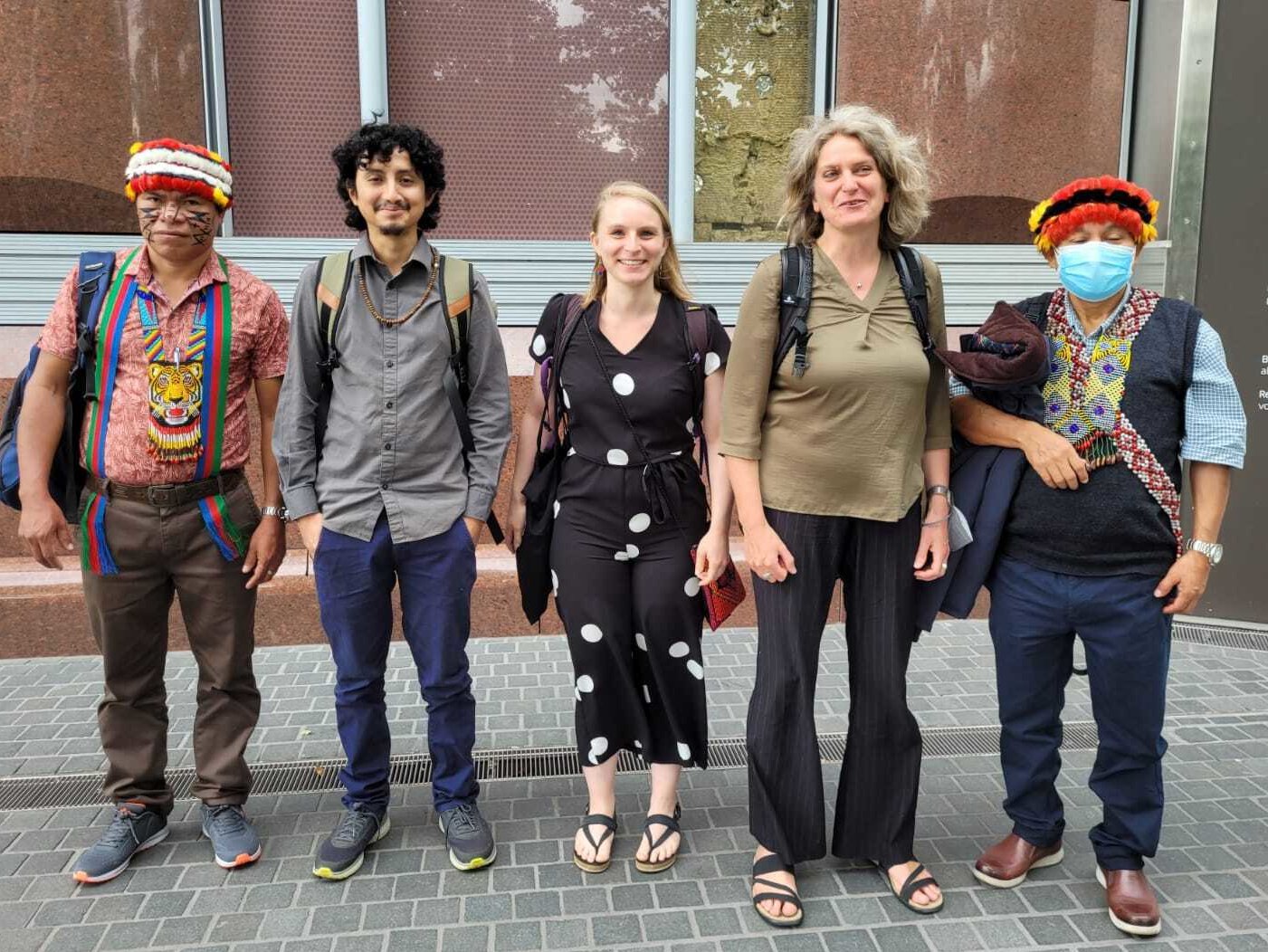

Achuar-Wampis delegation going to Germany. ©AmazonWatch
In case you missed it
Calling for international solidarity, Elizabeth Wathuti speaks to Shado mag about loss and damage and the importance of sharing frontline stories.
In Kenya, the Ogiek Peoples of Mount Elgon have been fighting for land rights and the opportunity to demonstrate their role in biodiversity conservation – this video sheds light on this story.
The new season of the teen comedy drama Reservation Dogs is out – it has a very subtle climate message and is also making waves for its representation of Indigenous People’s on TV.
In Australia, a group of marketing, public relations, advertising and media professionals launched a campaign calling for a tobacco-style blanket ban on advertising by coal, oil and gas companies.
What’s the relationship between systemic racism, the British Empire and climate change? Dr Mya-Rose Craig explains.
A group of youth activists involved in End Fossil: Occupy! have published an open letter where they explain why they have occupied hundreds of schools and universities to push for climate action.
Called “black gold” by the locals in the Pakistani provinces of Punjab and Khyber Pakhtunkhwa, the coal used in various sectors makes the air toxic and endangers children’s health.
Climate justice activist Xiye Bastida spoke to Elle about cultural shifts, communicating to activists as well as to policymakers and what success looks like for her.
In Bangladesh, millions are at risk of being displaced because of climate change – here’s why a vision of transformative adaptation creates opportunities for climate migrants to live and work.
And for those who want to know the science behind climate change, here is a visual explanation of the latest scientific report by the IPCC, the world’s leading body of climate researchers.
Recommendations
What we’re listening to
-
Radio Savia (Spanish)
On Radio Savia you’ll hear stories about defending, caring for and healing Latin American territories. This podcast celebrates ancestral knowledge and honours the reciprocal relationship between body and land through stories of environmental justice and healing practices.
-
Farmerama Radio
The voices of regenerative farmers! Every month, this show features farmers and growers who are rebuilding our food and ecosystems from the ground up. Even though we all need farmers, few of us have a deep connection to, or understanding of, farming. Farmerama Radio aims to change that.
-
Back to Earth: Queer Currents
Artists and thinkers connect the dots between queer theory, environmental activism and climate justice. Victoria Sin welcomes Serpentine Assistant Curator Kostas Stasinopoulos as a guest host to discuss transformation, queerness, the natural and unnatural, wild, decolonial, and submerged perspectives.
What we’re attending
-
Think Globally, Act Locally with Climate Activists from India
When? Wed, August 31, 2022 – 10-11 am EDT
Where? Online
Disha Ravi is a climate and environmental activist known for her advocacy for better climate and environmental policies and governance. She is deeply committed to ensuring that the voices of MAPA – Most Affected People and Areas – are heard in climate conversations and negotiations. In this upcoming programme, she will interview four climate justice activists from India. -
Defending the Sacred: Indigenous-led Environmental Justice
Where? Online recording
Since environmental justice addresses social, racial and economic inequities, solutions must be intersectional and targeted for the most vulnerable populations. In this webinar, Thomas Lopez Jr. speaks about the work that Indigenous communities are doing to protect the environment through direct action, fashion, the preservation of ancestral knowledge, and the exploration of identity.
What we’re reading
-
All We Can Save: Truth, Courage, and Solutions for the Climate Crisis
Combining essays, poetry and art, this book helps us understand what has been done to the world, while strengthening our resolve to never give up on each other or our collective future. Curated by two women climate leaders, it is a celebration of the visionaries who lead us on a path to save everything.
-
Braiding Sweetgrass: Indigenous Wisdom, Scientific Knowledge, and the Teachings of Plants
Building on her life as an Indigenous scientist, mother and woman, Robin Wall Kimmerer shows how other living beings offer us gifts and lessons. In a rich weave of reflections, she highlights that the awakening of a broader ecological consciousness requires recognising and celebrating our reciprocal relationship with the rest of the living world.


